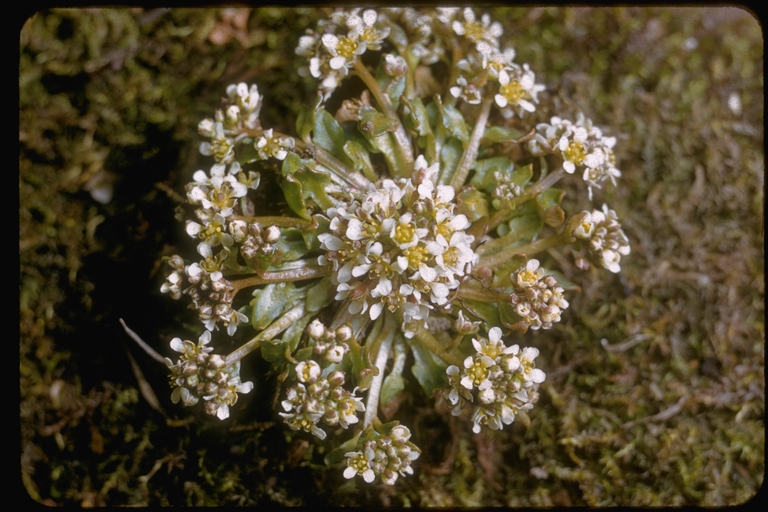Hosted by the University of Washington Herbarium, Burke Museum
Publication: Sp. Pl. 2: 647. 1753 1753.
Origin: Native
selected vouchers: WTU
Notes: FNA7: "R. C. Rollins (1993) treated the North American plants with 2n = 14 as members of Cochlearia officinalis. That species is a strictly European tetraploid with 2n = 24. In our opinion, plants of the arctic and subarctic C. groenlandica complex represent an evolutionary lineage with x = 7, which is entirely distinct from that including the European C. officinalis and its relatives with x = 6. The systematic relationships of the x = 7 group to the 2n = 14 Icelandic plants of the C. pyrenaica complex are still unresolved.
The North American plants are extremely variable in flower size, petal shape, and fruit shape and size. They are much in need of detailed cytological, morphological, and molecular studies.
Cochlearia groenlandica is known in California from nesting areas on off-shore rocks in Del Norte County; in Oregon it occurs on ocean bluffs in Coos and Curry counties (A. Liston, pers. comm.). It appears to be naturally occurring in both states."
References: (none)

